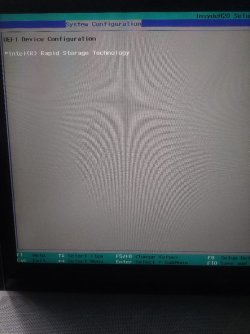Hi. I recently upgraded our Dell Laptop from HDD to SSD and my son has asked me to do the same with his HP laptop. It is an HP Envy 17 bw0003na i7 8th Gen with a 1TB HDD and 16Gb PCLe NVMe Intel Optane module. I also wanted to change the SATA configuration from Raid to AHCI without a clean install using Safe Mode, and there was an option in the Dell BIOS to switch, something I can't see in the HP BIOS. There is an option in BIOS to disable Intel Optane and I would probably remove the Optane module when replacing the HDD. I'm unsure if the BIOS is set to Raid or AHCI - it uses the IRST driver but the BIOS says that it is AHCI (non-Raid). I've attached a couple of shots of the HP BIOS using my mobile phone so hope they are OK. I have also read on the HP Forums about "Locked BIOS" in some HP devices and was unsure if that is what was happening here. Would be grateful for any advice. Thanks.
- Windows Build/Version
- Windows 11 23H2
Attachments
My Computer
System One
-
- OS
- Windows 11 Home









